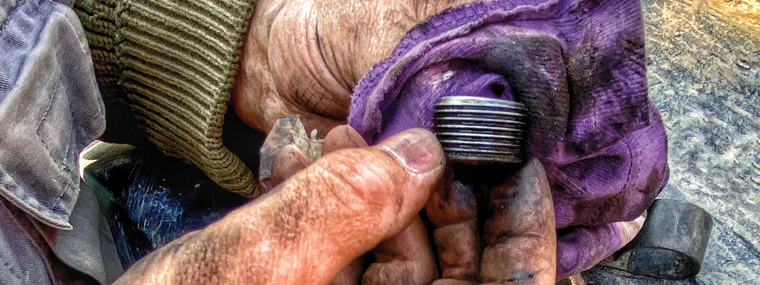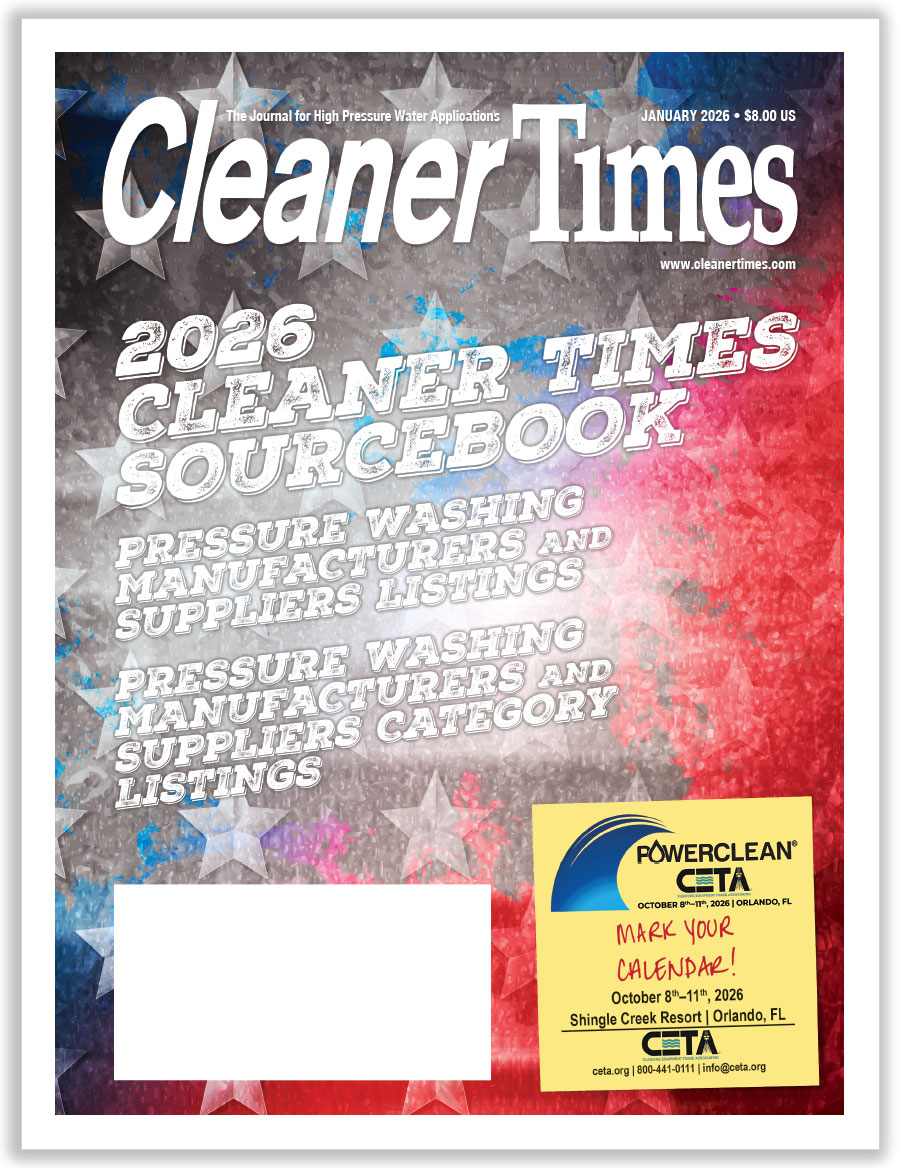
Troubleshooting Engines
By April Hirsch / Published June 2020

Energy in, mechanical power out—that sums up an engine. It’s genius that keeps the world moving at every level.
Fitting, then, that genius is built right into the Latin root word, ingenium, from which engine derives. Ingenious or not, things can and do go wrong.
When an engine quits, it’s natural to want to know why, even if the engine is headed to a repair shop. And in most cases, that’s where it should be headed if there’s a problem.
Yet a few engine issues can be easily detected and remedied. Is there fuel in the gas or diesel engine? Is the electric engine plugged into a power source? Is the electric engine switch in the on position? (Silly? Only if the contractor has never forgotten to flip a switch.)
For readers who want to better understand the engines on their pressure washers, we recommend some informative sites from familiar manufacturers and suppliers of engines, as well as some deep context sources of information for those who really want to get to know engines better—even if they know a lot. We follow through with several notes about entities such as the Environmental Protection Agency that take an interest in engines, and why that is so.
Places To Start
Gas, diesel, electric, and hydraulic engines may be used with pressure washers. Ultimate Washer® provides a concise rundown of the differences in capabilities among the four types. (See www.ultimatewasher.com/pressure-washer-engines.htm.)
Manufacturers offer troubleshooting tips in digital and video forms. Hotsy Cleaning Systems (www.hotsysystems.com/docs/Trouble-Shooting-Guide.pdf) lists an extensive compilation of symptoms, possible causes, and corrective actions beginning with the basics. If a pressure washer will not run, the power supply may be disconnected, or a circuit breaker may have tripped.
Mi-T-M Corporation offers how-to videos, on-line product manuals, and FAQs (www.mitm.com/support/videos/troubleshooting-a-hot-water-pressure-washer-part-1). They are a good way to become more familiar with the engines on the company’s pressure washers, both hot and cold.
Briggs and Stratton gives some tips for solving problems with small engines. (See www.briggsandstratton.com/na/en_us/support/faqs/browse/engine-problem-solving-tips.html.) Clean fuel is important to a small engine. (It, in turn, depends on proper maintenance of equipment, which should not be stored with fuel—for safety as well as performance concerns.)
The owner’s manual for a pressure washer should be the starting point for troubleshooters. See the manual Northern Tool + Equipment offers for a gas pressure washer (www.northerntool.com/images/downloads/manuals/15781720.pdf), for example. A troubleshooting tabulation includes an engine that will not start. Causes and solutions are tabulated: low oil (fill with adequate amount of oil), cold engine (choke start), spark wire not attached (attach spark plug wire to spark plug), and so on. The table is on page 27 of the pdf.
Electric engines (motors) on power washers require special respect. Tinkering with one that is not working but still connected to a power source can lead to disaster.
Before plugging an electric pressure washer into an outlet, the contractor should use a multimeter to verify the voltage and the grounding. Most electric companies now routinely deliver voltages within two percent of the expected 120-volt or 240-volt targets. And machines have tolerances for such variation.
The real issue for electric engines involves surges in power, which are unfortunately all too common in some parts of the country. (High-density metropolitan areas have transformer networks that can quickly reroute flow along a grid if there is a disruption—a storm or an errant driver take down a line. Unfortunately, when the switch is being made, there can be a surge.) Onboard surge protectors are available in some electric pressure washers; the more sensitive the engines, the more valuable they are.
A pressure washer owner who wants to be ready to troubleshoot an engine should have available the recommendations the manufacturer of the engine or pressure washer provides for doing so. With that, care must still be taken, as the contractor must decide just how involved to get in correcting an engine problem.
If the contractor is not a mechanic, he or she is unlikely to have the optimal tools for making required adjustments and replacing parts. A call to a service center allows the contractor to ensure replacement parts are an exact match for an engine.
Ardent troubleshooters who want to replace parts themselves should be fully versed in safety procedures. And only parts recommended by the manufacturer of the engine should be used.
Context
Anyone craving further understanding of engines can find some excellent resources online. Many of them are texts used to teach engine repair in vocational schools.
A 695-page text, Small Engine Repair, written by Bill Hires, Mark Taylor, and Mike Bundy, was developed by The Mid-America Vocational Curriculum Consortium (in cooperation with the Instructional Materials Laboratory of the University of Missouri-Columbia) and published in 1985. (Any do-it-yourself engine repair buff would want to have it in hand. See files.eric.ed.gov/fulltext/ED271558.pdf . And note there are a few iterations, as well as some similar vocational training texts—all very useful.)
The text cited in the preceding paragraph genuinely grounds a troubleshooter in good procedure and knowledge. Dress for troubleshooting seems a needless reminder, but loose-fitting clothing and proximity to an engine, as in “let me get a closer look,” is just an unnecessary risk. So is trying to make do with the wrong-sized or wrong-type wrench.
Peppered with quizzes, the text cited is useful just for self-assessment. Are the necessary plier types among available hand tools? Engine principles and design, electrical systems, safety, tools, and measurement techniques are all covered along with troubleshooting.
Caution is the operative word for anyone who wants to troubleshoot without formal training in engines. Any attempt to force a fit or substitute a part for one from the original equipment manufacturer (OEM) can lead to problems, injury, or engine ruin.
At the minimum, anyone taking on engine troubleshooting as a do-it-yourself endeavor must commit to safety protocols and using only safety listed replacement parts from the OEM. Alternatives to the parts from the OEM are available. They should not be used.
Ill-advised modifications to an engine may impact the pump. The OEM intends the horsepower of
the engine to run the pump at the desired output. A contractor wants enough flow and pressure at the
job site. If the contractor decides to tinker with a wavering engine instead of taking it to a service center, the result may be insufficient flow or pressure and a machine beyond repair.
Troubleshooting to get a sense of what the problem is with an engine can lead to complications if a machine is under warranty. Any fiddling may invalidate the warranty if the machine heads to a service center.
For more context, return to the September 2018 article in this magazine, “Matching Engines and Pumps” (www.cleanertimes.com/magazine/cleaner-times-articles-2/matching-engines-and-pumps).
And for those still searching for clarity on strokes, turn to the Berry-man Products 2017 article, “What’s the Difference between 2-Stroke & 4-Stroke Engines?” (www.berrymanproducts.com/two-stroke-vs-four-stroke-engines).
Constraints
Regulators were once interested in engines in on-road vehicles almost to the point of ignoring small engines. That is no longer the case.
The California Air Resources Board (CARB) is ahead of the EPA in regulating emissions from engines. Engines are certified to meet applicable emissions controls (for horsepower and type of engine) by the manufacturer. But the rules that apply to rebuilding engines extend to anyone who does the work, including the contractor who has done some troubleshooting.
EPA requirements for rebuilding will illustrate the parameters (similar with CARB). The rebuilt engine must be restored to its original configuration, which encompasses the same emission controls that earned the engine certification. Rebuilding is generally considered a relatively major overhaul. It does not include changes required for routine maintenance.
The lesser efforts on engines, such as following instructions from OEMs for maintenance, require no record-keeping as far as EPA is concerned. On the other hand, EPA reminds users that no change should be made that increases emissions. There are also instructions for everything from what to do with data in an onboard computer (it can be reset after a fix is made) to whether improvements can be made to an engine (they can). See more at www.epa.gov/regulations-emissions-vehicles-and-engines/regulations-emissions-small-equipment-tools.
One way to really get to know an engine is to take it apart and put it back together—hands-on learning at its best. Yes, there are three-dimensional guides online. But, it’s never quite the same.
Readers with some time and access to a retired pressure washer engine might consider dismantling and reassembling it. It’s a good exercise to do with a child, who also might have some time available. One limitation may be access to the correct tools, so run a tool check first to determine whether those already in a contractor’s box will allow the project to proceed. It’s a good one.
The more we know about engines, the more we appreciate the ingenuity they reflect. A realization of the creative power of the human mind and spirit that carried us along for millennia may be just what’s needed to jolt us back to learning and exploring.





